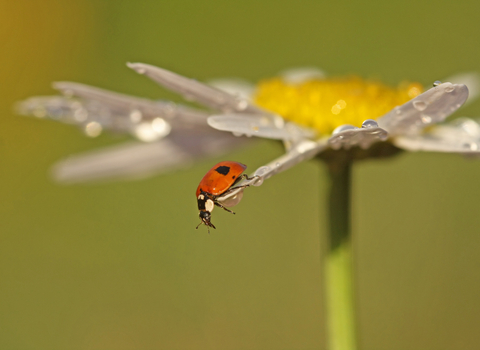
2-spot Ladybird ©Rachel Scopes
2-spot ladybird
Our most common ladybird, the black-on-red markings of the 2-spot Ladybird are familiar to many of us. Ladybirds are beneficial insects, managing garden pests - encourage them by putting up a bug box.

2-spot Ladybird ©Rachel Scopes